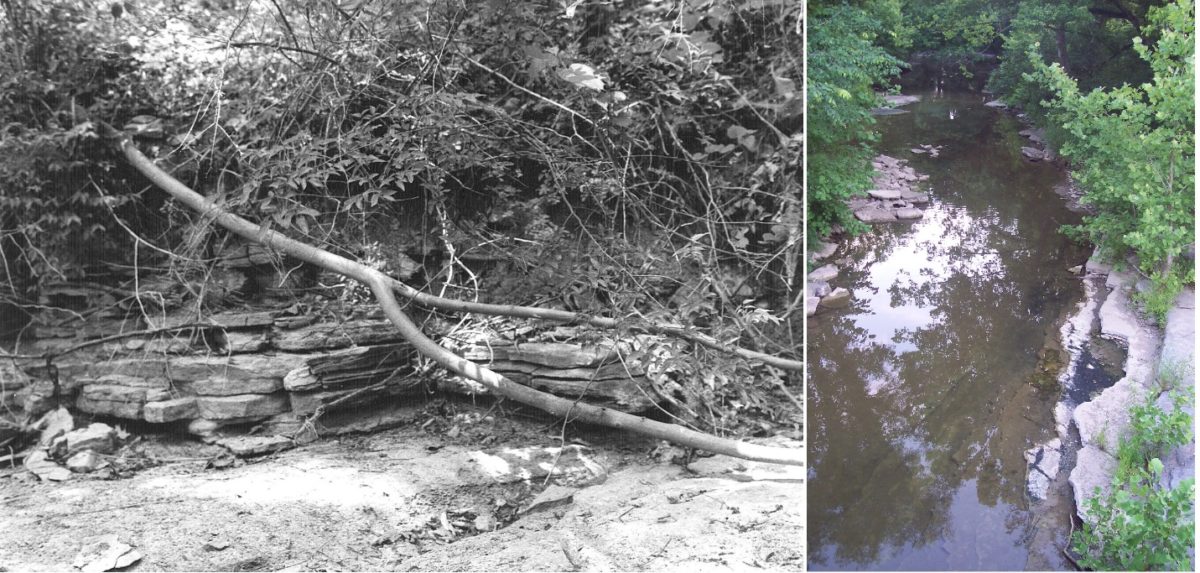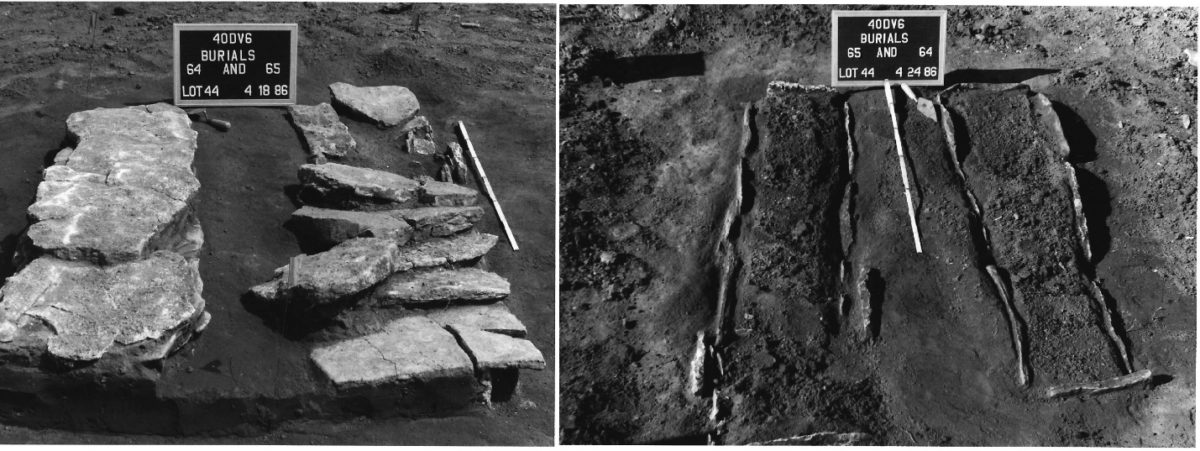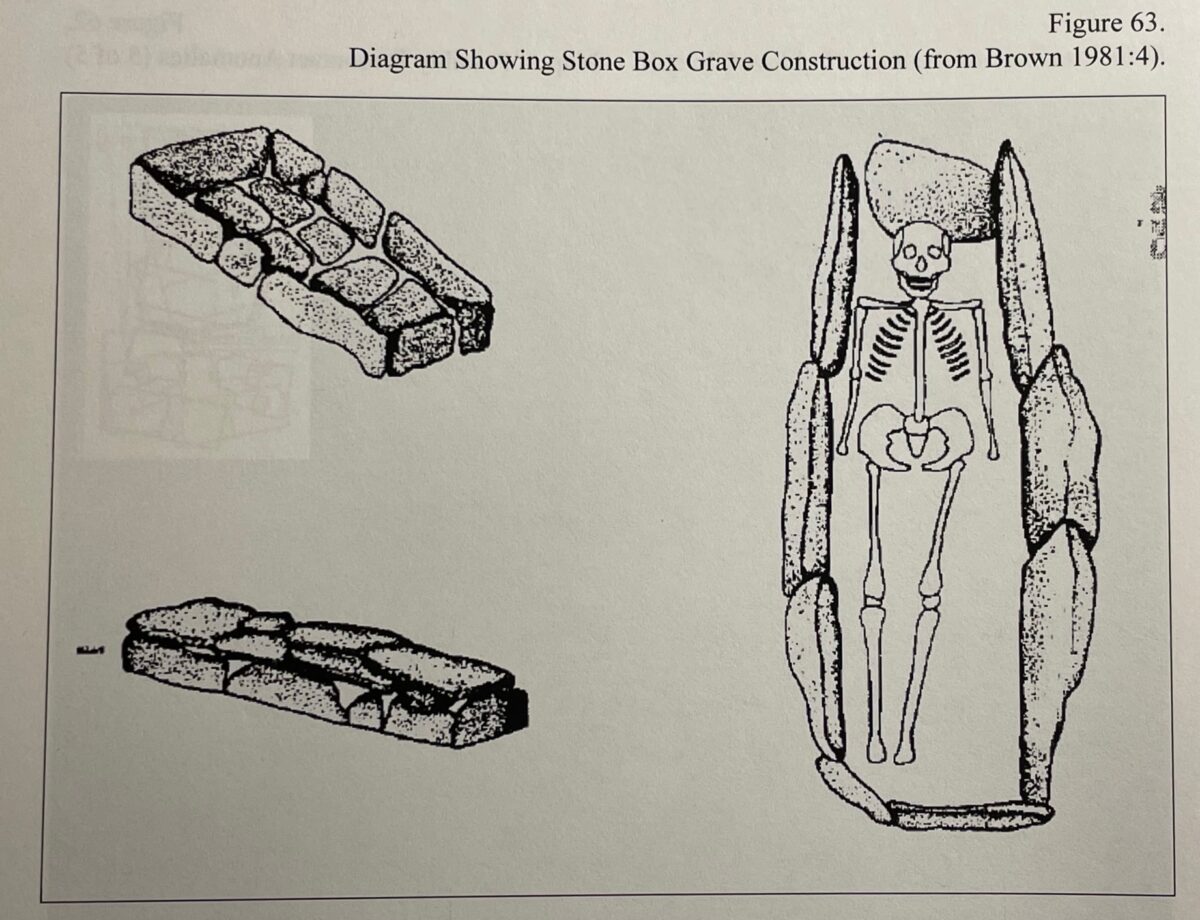Cumberland Stone-Box Graves of Middle Tennessee
By AD 1200 or so, Nashville’s Mississippian peoples created a unique form of grave to house their honored dead – the stone-box grave. Since the first historic settlement of Nashville in 1799, literally tens of thousands of stone-box graves have been uncovered by plowing, construction, and “digging” (both amateur and professional). Within a few generations, the stone-box grave became the dominant burial form along the Cumberland River – and had spread to become a minority burial form throughout much of the interior Southeast and lower Midwest.
A “typical” Cumberland stone-box grave was created by excavating a shallow rectangular coffin-shaped pit – form-fitting to the size of the individual to be interred. Thin limestone slabs were harvested almost tailor-made from nearby streambeds (Figure 1). These were used to line the sides and ends of the grave to form a tight-fitting box (Figure 2). Frequently the bottom was also lined with limestone slabs or large shards of broken pottery (Figure 3). The individual (or individuals) was then placed into the crypt, and the top covered with large limestone slabs. In the most carefully constructed of these graves, little or no dirt filtered into these coffins even eight centuries later. Generally, it appears that the graves were covered by only a few inches of soil and provided on the surface with some kind of perishable grave marker. Sometimes, the graves were reopened at a later date and used for one or more additional interments, perhaps relatives.
After AD 1300, stone-box graves were the ubiquitous mode of interment for everyone – rich and poor, children and adults, males and females. They were used by residents at all kinds of settlements – farmsteads, hamlets, larger villages and towns, and mound centers. At smaller settlements there might be only one or a handful of graves, while the larger town cemeteries ranged from 200 to over 3000 graves. At mound centers, the cemeteries occasionally grew to become “cemetery mounds” – for reasons as yet unknown, sometimes a small cemetery was built up in height a couple of feet to accommodate a second or even third tier of interments.
While the efficacy of these shallow stone-lined coffins in protecting the dead from scavengers is clear enough, it also seems clear that more was at work in the minds of their creators – some powerful religious belief about these stone boxes that remains elusive to us almost a millennia later.



For those interested in reading further about Nashville’s stone-box burials:
Brown, Ian W. 1981. A Study of Stone Box Graves in Eastern North America. Tennessee Anthropologist 6(1):1-26.
Dowd, John T. 2008. The Cumberland Stone-Box Burials of Middle Tennessee. Tennessee Archaeology 3(2):163-180. https://www.tn.gov/content/dam/tn/environment/archaeology/documents/tennesseearchaeologyjournal/arch-journal_volume-3-issue-2.pdf#page=65
Smith, Kevin E. 2013. Tennessee’s Ancient Pygmy Graveyards: The “Wonder of the Western Country.” Tennessee Archaeology 7(1):42-75.
Smith, Kevin E. 2019. Re-envisioning the Noel Stone-Grave Cemetery (40DV3), Davidson County, Tennessee. 30 Days of Tennessee Archaeology, published 09/02/2019. https://tennesseearchaeologycouncil.wordpress.com/2019/09/02/re-envisioning-the-noel-stone-grave-cemetery-40dv3-davidson-county-tennessee/
